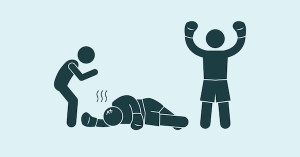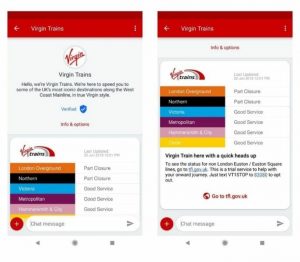
Writing a blog post isn’t easy, but writing a blog post that converts is even more difficult.
You have audience data to dig through, experts to find and quote, data from case studies and reports to find and include to support your topic. It’s really not the quick, few steps process you follow to write a personal opinion post.
A 2015 study by HubSpot shows that, on average, most marketers worldwide take 1-2 hours to get a well-researched, quality 500-word blog post done.

Yes, the data is for a 500-word blog posts. Double, triple, quadruple that time for lengthy posts (like the one you’re reading).
Sometimes you can dilute writing effort over several days, but what happens when you are writing on a short, non-extendable deadline? Maybe you have a guest post to write, an article to get done for a client or a sponsored post to publish by a specific date.
All these cases demand strong time management skills and strict adherence to a schedule.
But it doesn’t have to be stressful! You don’t have to grind your teeth. The solution is to work smarter, not harder.
And you work smarter when you write faster and more efficiently.
In this post, you will find 8 methods to structure your post and speed up your writing that I personally use when I work on my blog posts. Whether you use all of them or just some, according to your personal writing process, you will write more quickly and efficiently, without stress.
Also, if you, like me, suffer from anxiety and depression, you may want to combine the techniques in this post with the 7 coping strategies to write an outstanding blog post when you’re broken inside (no fluff, those are 7 real strategies I use to get writing done when my mind is not in good shape).

1. Get Analytical on that Headline
You came up with a great headline that you know will suck readers right into the copy.
Here’s the thing, though – how can you quickly go from your headline to full copy? How can you structure your content in a way that it delivers what your headline promises?
The analysis method takes your headline and breaks it down to produce a first outline of your blog post. Here’s how the method works:
- Take a look at your headline. What is it telling you? How can you tackle everything it promises in the copy?
- Grab a piece of paper and write your headline down in a centered position, so that you can write all around it
- Let your mind go wild during this stage and brainstorm as many ideas as possible
Here is a live example applied to one of my upcoming posts for n0tSEO.com:

The Headline Analysis Method (by Luana Spinetti)
This is an almost exact digital version of the messy notes on my paper notebook.
Here’s what I did:
- I tore apart the headline and separated words and phrases by concept
- I analyzed each word and phrase to go deep into what I want to talk about (the notes the arrows point to)
- I used the analysis to come up with a first post outline where I touch upon every point mentioned in the headline
I do this with every post I write for WHSR, for my blogs and when I pitch guest posts. It makes writing incredibly easier, because I then I know exactly what points to talk about and I don’t have to guess or second guess what I’m saying.
For more ideas, also see how Terri Scott breaks down her thought process on how to create captivating posts from headline to final draft in her post at BidSketch. She also shares the questions that guide her writing process.
2. Voice Record the Key Points Of Your Post
Don’t write – talk. Use your phone, your computer microphone or other recording devices to record yourself while you explain your topic to your audience, as if you were holding a conference.
I started using this method when I was bedridden after an accident in February and I read Bryan Harris’ post at Videofruit talking about how he could write a 10,000-word post in a few days by recording vocal notes. I was amazed at how simple and effective this method was and I wondered why I didn’t think about it before.
While Bryan’s post describes the entire process in detail, here’s a hint of how it works:
- Write an outline of your post (use the method I described in #1 to make the process faster)
- Record your voice as you explain the points in your outline and expand upon them
- Transcribe your vocal notes and adjust, cut or expand where needed
- Make another round or two of editing, add images, videos and anything you need to call your post done
With this method, you’ll get a lot more done (and way more ideas) in a short time.
A tip: if you can, be in front of a mirror as you record the key points. You’ll be both the speaker and the audience of yourself, and it will help you speak with more clarity and record better notes (plus, you can use hand gestures to help your speech).
For more ideas, also read Ginny Soskey’s post at HubSpot on how she wrote a 1,000-word post in 10 minutes.
3. Organize the Key Points Into Sections and Subsections
Don’t start writing your piece right away. Structure it first.
What would you say to someone asking what your piece is about? Of course, you’ll want to just give the key points, the meat, leaving everything else.
This is exactly what you do when you structure your post with subheadings: it’s the core of your post, its “elevator pitch”, the essential information you want to convey.
If you already used method #1 in this post, you’ll have a first outline that you can further develop in sections and subsections. For my example above, that will be:
[Intro: How I noticed a certain use of biased words by Google with webmasters and how they influence the “Google culture” on the Web]
X Biased Words and Phrases Google Uses With Webmasters
[list of words + analysis]
The Problem With Guidelines Enforcement (Should They Even Be Enforced?)
Google’s “how the Web should be” is a non-universal bias
Putting Words Back Where They Belong: Tips to Reread Google’s Guidelines
The perspective of an independent webmaster
A Last Word About the Danger of the “Google Culture”
If you are writing a piece that doesn’t have to be divided into sections and subsections, and you don’t feel like doing this work just for the sake of structure, you can do what David Leonhardt, president of THGM Writers, does:
[I structure] Mostly in my head, before I ever start writing. An article I’m writing now was all organized into two sections. The first section, I had an idea of how the intro would go, and a list of three types of situations. The second section was a list of tips.
When it came to writing, I was pretty much able to just whiz through the first section, then I wrote down the list of tips, doing a bit of research to expand upon it. Once I had the structure for that section, I began to write.
4. Add Research and Statistics Before Writing
Statistics and expert quotes not only guide you in the right direction and help you avoid biased assumptions, but they also give authority to your post and make the rest of the writing easier, because you have numbers, facts and experts to support your topic and you don’t feel like you’re building on fluff.
In other words, research and statistics lay the foundation of your blog post and make the rest of your writing as easy as building upon solid points.
Research can really drive your writing. Here’s what Anna Fox from Hire Bloggers does before she writes:
Before even trying to write an article, I use Google to search for:
- Keyword stats
- Keyword trends
For many topics (food, DIY, motherhood) it makes sense to also search Pinterest because I always end up finding some infographics that would change the angle of my overall article.
With MyBlogU in place now, I also create a brainstorming project because those user-contributed tips may change the future article angle as well.
Finally, I use Answer The Public to see which questions there exist on that topic: that may steer my writing as well.
I only start writing when I do all of that and feel excited about the narrow angle I’ve decided to focus on.
David Leonhardt also readies his information before writing:
Sometimes I gather up links and notes in WordPress ahead of time. Then when I am ready to write, I have all the information right there. This usually happens when I read something interesting and say to myself, “Oooh, I want to write about that!”
Here is how I handle research and writing for my blog posts:
- After coming up with a headline and outline, I start researching other authority articles about my topic and assign some of these to the sections and subsections of my post (sometimes I might create a new subsection on the basis of an article I’ve just read that gave me a new idea to talk about)
- I tell other bloggers and experts that I’m writing a new blog post around a certain topic and I invite them to contribute a quote
- I write my first draft and I stay away from further research. In this stage, I only rely on what I learned, the sources I have and what I already know to write. I will add placeholders like [find info about ABC here…] whenever I feel that some points need further research
- I include experts’ quotes and I research to fill the placeholders I left in my copy or to expand upon my points a little whenever I feel the reader might need further information
- I run one or two editing sessions and review all the sources and links I included
Sometimes I will do number 4 before number 3 in this list but, in general, this is my workflow.
5. Develop Each Subsection as if It Was a Standalone Post
This technique works like a charm, especially if you feel tired and overwhelmed, have anxiety or you are dealing with writer’s block, because it narrows your goal and makes the effort seem smaller.
As my Programming professor used to say at the university, “you can tackle a big problem better if you divide it into smaller problems and focus on one small problem at a time”.
There are two ways you can go about this:
- Focus on the subsection of choice in your post draft
- Copy the subsection to a brand new file and write it there
I use both methods, but I tend to prefer the second because it helps me focus quickly and doesn’t let other subsections distract me or work against my attempt to keep anxiety at bay.
Developing subsections like standalone posts also places you in the right mindset to develop bigger guides, tutorials and ebooks, which is exactly what Casey Miller of The Best of Fitness does:
I have been creating my posts around each subsection and then putting all my subsections together as if it was a book. I found that by doing this, I can create more content around a whole subject easier and it gives the reader more value than a simple 200-word post. For example, my post “What is Crossfit: Learn Now with this Ultimate Guide”, I have 18 chapters and a total of 5000 words. I created links to each section so someone can jump right to it if they wanted.
When I create posts like this, I typically only create 1 per month as it takes time to find content/create for each section and to put the layout together. Although the nice part about it is, I only have to create one post a month and a post of this size can easily bring in 25,000 plus visitors due to the content and keywords used.
6. Write Your Subsections Starting From the Last One
It might sound counterintuitive, but developing your points in reverse order will help you write more efficiently because it will improve your focus, reduce stress and anxiety, and make your mind more attentive to details you might otherwise overlook as you go with the flow, including grammar and typos.
It’s like switching positions in bed to make your body feel more relaxed – switching order will give your mind new energy and relax you at the same time, as if you had some good rest before starting a new project. The reason is that by changing the order you break the flow and reset your expectations, forcing yourself to see things from a new angle.
Of course, this works better when subsections are standalone (see #5) and not sequential. If they are sequential, I recommend you outline them all before you use this technique.
7. Use Self-Dictation to Reduce Spelling and Grammar Errors and Improve Focus
I began to do this recently and I like doing it, especially when I’m writing big, difficult blog posts. It gives me confidence in how I argue my topic. With the self-esteem boost, I also sharpen my eye to catch typos and grammar errors.
Talk while you write, as if you were dictating your post to someone else. This method helps you keep your focus, eases your stress and doesn’t let your mind wander, because you are actually freeing your mind from the added burden of having to keep up with an ‘inner voice’.
If you have been jumping from paragraph to paragraph while writing as it might have happened if you followed #5 and #6 in this post, your confidence as a writer will also benefit from reading aloud because your post will take on a finished shape in your mind, as if you were reading someone else’s work.
Jean Margaret Walker at BeingJean.com says:
In order to make sure posts read well, reading them aloud is so helpful. You’ll notice missing words much easier than if you skimmed over posts while reading quietly in your head. It’s especially a good idea to read the content aloud to find missing articles… the smaller words like a, an, the, etc.
8. Leave Links or Minor Citations as Your Last Step Before Editing
This is important to not interrupt your focus as you write. You may not realize it, but when you open a new tab to search for a resource or an expert quote to include in the text, your focus is switching to the new task and getting back to the flow of writing will be more difficult. Going back and forth will slow you down and, if you are an anxious writer or have a hard time regaining your focus, make your condition worse.
If you followed #4 in this post, you know it’s better to do most of your research before you start writing the post. You can always add more later, but after you have written your draft, not as you write.
Adding new links and quotes is part of the editing phase. As David Leonhardt says:
The links I need for research, to get the data, I find before writing. Then, as part of my first edit, I note anything that might need further explanation, clarification or examples, and I search for a link for that.
BONUS Tip: Start Your Post With “Dear {insert audience here}…”
When I started writing this post, my first words were:
“Dear blogger…”
Whether you own a business, write as a part of your marketing activities or you blog in a niche, you are still a blogger.
You are my audience. I write for you.
This humble beginning has a great power over your thought process as you write: it switches your mindset, so that you are no longer a person sitting at a desk typing on a keyboard to fill a blank screen with words, but you become a speaker who talks to an audience, and the audience is in front of you, and you deeply care about them and their future.
The switch in mindset turns on your empathy antenna and you are less likely to write fluff, because you know the people listening to you are waiting for the words that will make a difference.
You can edit out that “Dear blogger…” before you publish your piece, but I urge you to keep it there at the top of your post until the very end, because it sets the tone and quality of your post and it will help greatly in the editing process, when you read your post all over again.
Yes, it will sound like a personal letter; that is what it will make it work.
I don’t know if Eli Seekins used the “Dear blogger…” technique to write his post at Writers Village – An Honest Letter To The Writer Struggling To Make It – but seeing the way he created a connection to his audience, something tells me he did.
Takeaway
Writing faster and more efficiently is a matter of hacking your writing habits to discover what works best for you, when you are more focused during the day and how to manage your energies and thought process to keep your mind active and productive from start to finish.
The 8 ways described in this post are all hacks that work, but don’t limit yourself to blind application – study your habits, your daily rhythms and the way your mind works to build discourse around a topic. Then, find the right combination that works for you.
You are unique! What matters is that:
- You can manage your psychological blocks to minimize their effects on your writing
- You can break down your thought process so that writing efficiently becomes a simple matter of following a plan
You may not be the fastest or most efficient blogger in the world, but it doesn’t matter – as long as you can get your work done and that work brings results, you are a good blogger.
To cite the HubSpot study I mentioned at the beginning of this article:
Some quick posts could take under an hour to write; others might take several hours if they require you to go really in-depth.
You may also want to read Jerry Low’s guest post at Blogging Wizard, Blog Efficiently And Productively: How To Blog More In Less Time for writing habits, tools and blog management tips.
Digital & Social Articles on Business 2 Community(42)
Report Post






